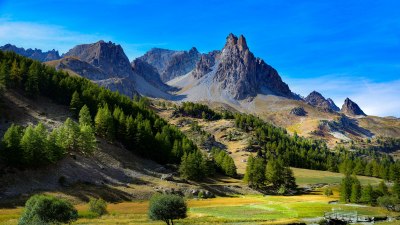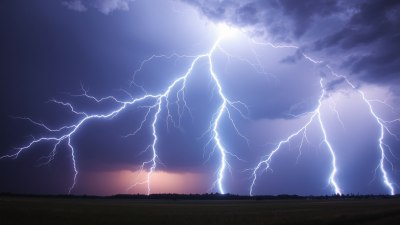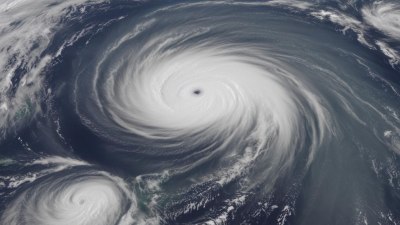Can the Shape of Mountains Create Permanent Storm Clouds
Explore how mountain shapes influence weather patterns and lead to permanent storm clouds.

The relationship between mountain shapes and the formation of permanent storm clouds is a fascinating area of study in meteorology and geography. Mountains are not just static landforms; they play a critical role in shaping local climate conditions. This article will delve into how these impressive geographical features can influence weather patterns, particularly the formation of clouds and precipitation.
Mountains are typically formed through tectonic processes involving the collision of the earth's plates, leading to uplift and folding. These geological processes create a variety of mountain shapes, ranging from rugged peaks to smooth slopes. The topography of mountains has a direct impact on air movement, allowing us to understand how they can create unique weather patterns, including persistent storm clouds.
The Mechanism of Orographic Lift
One key factor in how mountains create storm clouds is the phenomenon known as orographic lift. When moist air approaches a mountain range, it is forced to ascend as it hits the mountain’s slopes. As air rises, it cools and expands, leading to condensation as the temperature drops. This process can result in the formation of clouds, and if the conditions are right, these clouds can develop into significant storm systems, including rain and snow.
For example, in the Pacific Northwest region of the United States, the Cascade Range has a profound effect on local weather. The prevailing winds carry moist air from the Pacific Ocean towards the mountains. As the humid air pushes against the mountain range, it is lifted, resulting in heavy precipitation on the windward side, while the leeward side, known as the rain shadow, experiences significantly drier conditions. This example illustrates how mountains can create not only clouds but also distinct climatic zones on either side of them.
Impact of Mountain Shape on Weather Patterns
The shape and orientation of mountains can greatly influence the intensity and frequency of storm cloud formation. Sharp, jagged peaks may create stronger lift for moist air, leading to intense weather phenomena, while gentler slopes might result in more stable air flow and less pronounced precipitation. Mountains that run parallel to prevailing wind directions tend to intercept moist winds more effectively than those oriented perpendicular to the wind. Understanding this interplay helps meteorologists predict weather patterns in mountainous regions.
Additionally, the altitude of mountains can play a role in cloud formation. Higher elevations generally experience lower temperatures, thereby enhancing the likelihood of condensation and cloud development. This explains why high-altitude mountain ranges, such as the Andes or the Himalayas, often see persistent cloud cover and extended periods of precipitation.
Examples of Permanent Storm Cloud Regions
Some regions are especially known for their persistent storm clouds thanks to their mountainous terrain. The western slopes of the Andes, particularly in Chile and western Argentina, are notorious for their consistent cloud cover and high levels of rainfall. Meteorological observations suggest that the unique topographical features, combined with the Humboldt Current’s cold waters off the coast, create ideal conditions for storm clouds to develop and persist.
Another noteworthy example is the Sierra Nevada in California, where the Sierra’s eastern slopes face a rain shadow, while the western slopes capture significant moisture and are subject to substantial storm systems throughout the year. The variations in weather due to the Sierra Nevada’s topography also contribute to the diverse ecosystems found within the region.
Climate Change and Mountain Weather Patterns
As climate change continues to impact global weather systems, the relationship between mountains and storm clouds could also evolve. Evidence suggests that changes in temperature and precipitation patterns may alter the intensity and frequency of storms in mountainous regions. For instance, as average temperatures rise, we may see changes in the amount of snowfall versus rain, potentially influencing the duration of cloud cover in specific areas.
Moreover, shifts in wind patterns may also lead to changes in how mountains interact with moist air masses. This could create a feedback loop whereby altered weather patterns lead to different vegetation growth, which in turn impacts local climate and weather systems. Understanding these dynamics is critical for predicting future weather patterns in mountainous areas.
The Role of Vegetation and Ecosystems
Vegetation covering mountainous regions can also influence cloud formation and rain patterns. Forests, for instance, play a significant role in the water cycle by transpiring moisture into the atmosphere. In lush, forested mountain ranges, the additional moisture can aid in cloud formation, enhancing precipitation levels. This interaction highlights the importance of maintaining healthy ecosystems in mountainous areas to preserve not just biodiversity, but also crucial weather patterns.
This is observed in areas like the Pacific Northwest, where dense forests contribute to the climate’s characteristic wetness. Consequently, the health of these ecosystems can significantly impact the permanence of storm clouds in the region.
Future Research Directions
As our understanding of the interplay between mountains and weather systems grows, future research will be essential to comprehensively understand how these dynamics work. Advances in technology, including satellite imagery and climate models, are allowing scientists to better track and predict weather patterns influenced by mountainous geography.
Research focusing on the relationship between mountain ranges and local climate will provide insights not only into weather patterns but also into broader implications for water resources, agriculture, and ecosystems. Understanding how changes in storm cloud formation patterns, driven by both natural and anthropogenic factors, can inform better resource management and preparedness for extreme weather events in vulnerable regions.
The shape of mountains undoubtedly plays a crucial role in the creation of storm clouds and weather patterns. From orographic lift to the influence of altitude and vegetation, these geographical features are pivotal in understanding local climates. Mountains can champion the creation of permanent storm clouds, drastically influencing precipitation and climate in their vicinity. As climate change continues to challenge existing weather norms, ongoing research will be essential in understanding these complex systems and preparing for future shifts in weather patterns across mountainous regions.











